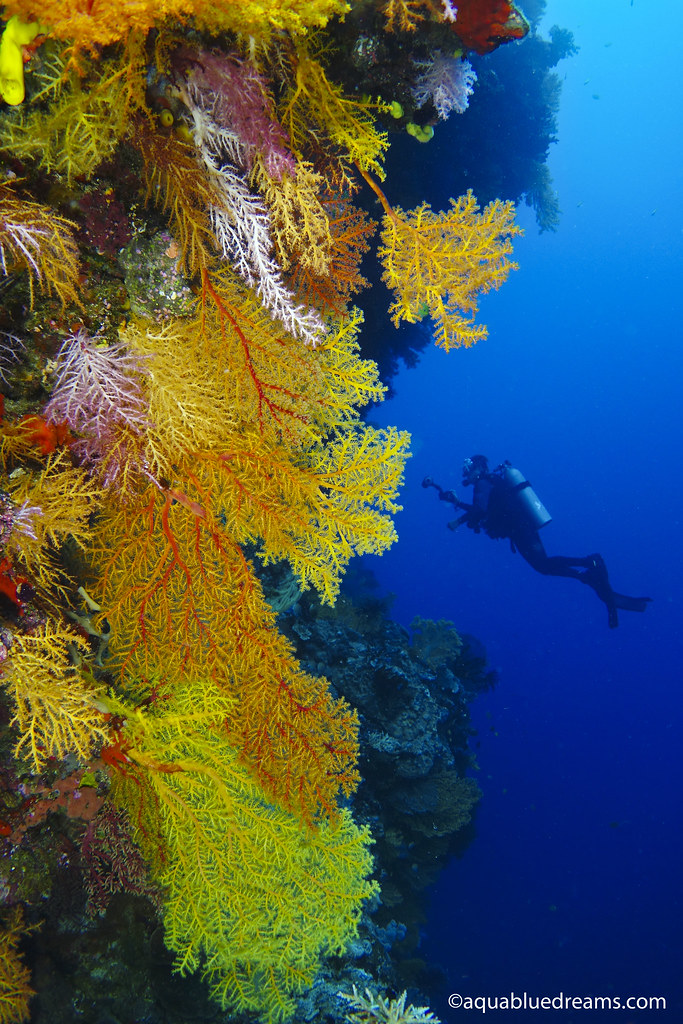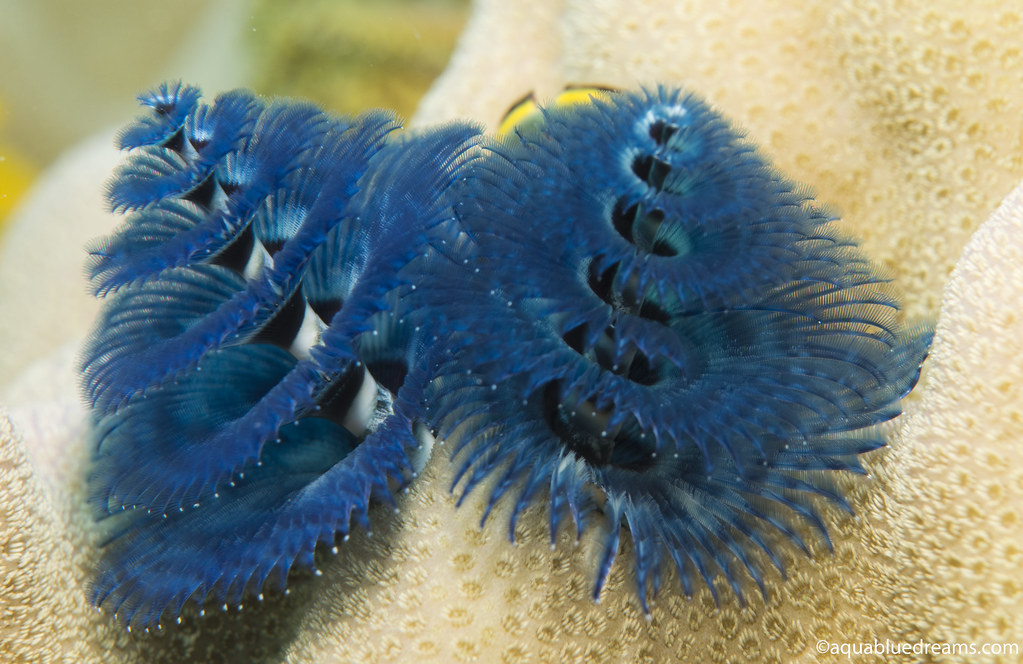The Sony RX100 camera is a thoroughly reviewed camera due to its category leading 1” sensor; roughly 4 times larger than anything else in the Point & Shoot class. Not being a “techy” this will be another “real world, average guy” review of the complete system shot over 10 days while aboard the Nai’a in Fiji.
Equipment Used
Sony RX100
Nauticam RX100 Housing
Nauticam 67mm Flip Diopter Holder
2x Sea & Sea YS-D1 Strobes
10Bar SSHL-SSHL 90 Degree Optical Sync Cords
10Bar 67mm Lens Holder
2x Light & Motion Sola 4000
Inon UWL-H100 28M67 Wide Conversion Lens (Type2)
Inon Dome Lens Unit II For UWL-H100 (Dry Dome used with H100 Lens)
Subsea +10 Diopter
I-DAS Strobe Arms & Clamps
Dual Modular Tray*
The Sony RX100
I found the build quality of the camera solid and the button layout practical. I did find when shooting on land my thumb hitting the video Rec button on occasion. It is a little bigger and heavier than the Canon S100 but still comfortable as a pocket cam. The menu system is user friendly and straightforward to navigate. You have to charge the battery in camera so looking forward to some company producing an external battery charger. The one minor shortcoming is the Sony RX100 does not have a strong Macro feature.
Nauticam RX100 Housing
The housing meets Nauticam high quality build standards. Just drop the camera in and start shooting. The locking system is about as simple and secure as possible. A key feature is the housing gives you access to all the cameras controls. This is crucial for those who shoot in Manual, as I do. The rear and front dials move smoothly making adjusting Shutter Speed and Aperture easy to change. I assigned the Fn button on the back of the housing to ISO, so you can customize as you like. This is a camera and housing you can “grow” into if you are shooting in Auto and TTL.
As a long time DSLR shooter I was looking forward to being able use wide-angle and macro wet lenses underwater. I had hoped to use the Nauticam Flip Diopter holder with both the Subsea +10 diopter and Inon H100 W/A lenses but that was not ideal. When you attach the Inon H100 WA lens to the Nauticam Flip Diopter holder and are zoomed to the widest angle you get some minor vignette. You can use it but you will have to zoom in a stop.
When concentrating on wide angle the Inon H100 was threaded directly onto the Nauticam port, with the Subsea in the lens holder on the I-Das arm. When changing lenses there would be a point when I was holding both lenses and that is a bit awkward. In the future I will add a second 67mm Lens Holder to a strobe arm. Thus you can shoot without a wet lens while having both available. If concentrating on Macro the Nauticam Flip Diopter holder works great.
I used 4 Stix large floats on the strobe arms. It would take 6 to make the system very close to neutral. Regardless, compared to a DSLR system even without the Stix floats the set-up was easy to hold and dive with just one hand.
Inon H100 lens and dome
For Fiji’s colorful walls I was very happy to have the Inon H100 wet lens and its companion dome. This is a two-part system. The H100 is a standard wet-lens that gives you 100 degrees of coverage. The dome attaches to the H100 and is a “dry” dome, extending coverage to 144 degrees. The dome has 2 o-rings and sealing system employing a collar/back-plate and 6 bolts. So the dome cannot be removed from the H100 lens underwater. The dome did occasionally fog going from the outside camera table-to sun while on the 5min skiff ride-then into the cooler water. I would try to keep the housing and dome out of the sun as much as possible or throw a wet towel over it.
General System Performance Underwater
Pros
Cons
Conclusions
This is a great system! One that will be in my bag from here on out.For fish portrait-wide angle work, with the right wet-lenses, I think results can be achieved that will make some think twice about buying systems 3-5 times the cost, weight and size. Again you can do macro with diopters but the results will not be on par with a DSLR or 4/3 systems and a good 60mm lens. So I am not saying this camera is on par with a DSLR or 4/3 systems...but when the DSLR folks are shooting nudibranchs and the whale shark swims by they are out of luck and the Sony RX100 can get a fantastic shot!
*Tray was modified to accept the Nauticam RX100 Housing
Wide

Medium

Macro with Subsea +10 Diopter

Equipment Used
Sony RX100
Nauticam RX100 Housing
Nauticam 67mm Flip Diopter Holder
2x Sea & Sea YS-D1 Strobes
10Bar SSHL-SSHL 90 Degree Optical Sync Cords
10Bar 67mm Lens Holder
2x Light & Motion Sola 4000
Inon UWL-H100 28M67 Wide Conversion Lens (Type2)
Inon Dome Lens Unit II For UWL-H100 (Dry Dome used with H100 Lens)
Subsea +10 Diopter
I-DAS Strobe Arms & Clamps
Dual Modular Tray*
The Sony RX100
I found the build quality of the camera solid and the button layout practical. I did find when shooting on land my thumb hitting the video Rec button on occasion. It is a little bigger and heavier than the Canon S100 but still comfortable as a pocket cam. The menu system is user friendly and straightforward to navigate. You have to charge the battery in camera so looking forward to some company producing an external battery charger. The one minor shortcoming is the Sony RX100 does not have a strong Macro feature.
Nauticam RX100 Housing
The housing meets Nauticam high quality build standards. Just drop the camera in and start shooting. The locking system is about as simple and secure as possible. A key feature is the housing gives you access to all the cameras controls. This is crucial for those who shoot in Manual, as I do. The rear and front dials move smoothly making adjusting Shutter Speed and Aperture easy to change. I assigned the Fn button on the back of the housing to ISO, so you can customize as you like. This is a camera and housing you can “grow” into if you are shooting in Auto and TTL.
As a long time DSLR shooter I was looking forward to being able use wide-angle and macro wet lenses underwater. I had hoped to use the Nauticam Flip Diopter holder with both the Subsea +10 diopter and Inon H100 W/A lenses but that was not ideal. When you attach the Inon H100 WA lens to the Nauticam Flip Diopter holder and are zoomed to the widest angle you get some minor vignette. You can use it but you will have to zoom in a stop.
When concentrating on wide angle the Inon H100 was threaded directly onto the Nauticam port, with the Subsea in the lens holder on the I-Das arm. When changing lenses there would be a point when I was holding both lenses and that is a bit awkward. In the future I will add a second 67mm Lens Holder to a strobe arm. Thus you can shoot without a wet lens while having both available. If concentrating on Macro the Nauticam Flip Diopter holder works great.
I used 4 Stix large floats on the strobe arms. It would take 6 to make the system very close to neutral. Regardless, compared to a DSLR system even without the Stix floats the set-up was easy to hold and dive with just one hand.
Inon H100 lens and dome
For Fiji’s colorful walls I was very happy to have the Inon H100 wet lens and its companion dome. This is a two-part system. The H100 is a standard wet-lens that gives you 100 degrees of coverage. The dome attaches to the H100 and is a “dry” dome, extending coverage to 144 degrees. The dome has 2 o-rings and sealing system employing a collar/back-plate and 6 bolts. So the dome cannot be removed from the H100 lens underwater. The dome did occasionally fog going from the outside camera table-to sun while on the 5min skiff ride-then into the cooler water. I would try to keep the housing and dome out of the sun as much as possible or throw a wet towel over it.
General System Performance Underwater
Pros
- Native lens is good for “don’t know what you will see” diving.
- Quick autofocus in mid-wide angle shooting, even in low light.
- Full manual control.
- Good JPEG Fine output but has option for RAW or RAW+JPEG.
- Excellent system for WA photography when used with the Inon H1OO lens and dome.
- Very good results when shooting Auto and S&S YS-D1 strobes in TTL.
- Compact size of system when compared to a DSLR or even 4/3 systems. Carry-on with strobes, batteries, wet-lenses, everything I needed to shoot was >15lbs.
- FLEXIBILITY! Ability to shoot Leaf Fish and Landscapes on one dive.
- With no mirror you can shoot at +300 shutter speeds for pleasing sun-ball/sunray shots.
Cons
- If this camera has a “weakness” it is it only has “fair” macro capability. When used with the Subsea +10 diopter you can shoot dime sized subjects but you will be just inches away. On the upside with 20 megapixels you can crop to compensate.
- Have to wait for on board flash to recycle. If you are accustomed to electrical syncs you will find you have to time your shots more.
- Focus when shooting macro can be inconsistent.
- No viewfinder.
- When used with H100/Dome pictures can be a little soft under f/5.
- Nauticam housing can fog, would suggest silica packet/s.
- H100 Lens and Dome combo also can fog if going from tropical sun to cool water. Just try to keep in shade or under wet towel.
Conclusions
This is a great system! One that will be in my bag from here on out.For fish portrait-wide angle work, with the right wet-lenses, I think results can be achieved that will make some think twice about buying systems 3-5 times the cost, weight and size. Again you can do macro with diopters but the results will not be on par with a DSLR or 4/3 systems and a good 60mm lens. So I am not saying this camera is on par with a DSLR or 4/3 systems...but when the DSLR folks are shooting nudibranchs and the whale shark swims by they are out of luck and the Sony RX100 can get a fantastic shot!
*Tray was modified to accept the Nauticam RX100 Housing
Wide

Medium

Macro with Subsea +10 Diopter

Last edited:





